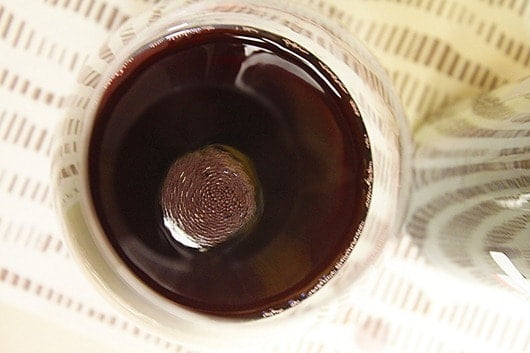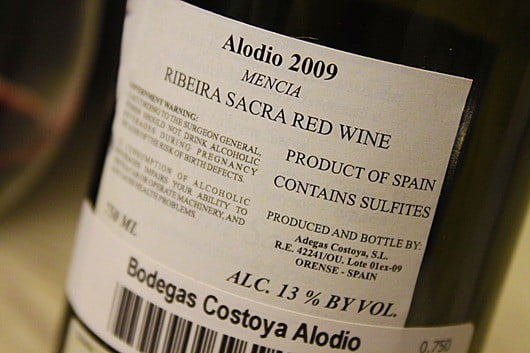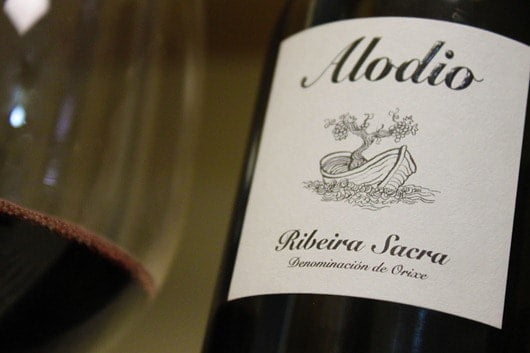Grapes
100% Mencia – pronounced “Mehn-cee-ah,” (or “Mehn-thee-ah” in Castilian Spanish…say it like you have a lisp.)
Facts
- My advice for wine drinkers (especially new wine drinkers) has ALWAYS been to try and venture outside your comfort zone and be open to trying new wines i.e. don’t get caught in a rut, drinking essentially the same old wine that you’ve been drinking for years. The Ribeira Sacra “Alodio” Mencia is a perfect example of me practicing what I preach! The label tells you NOTHING about the wine itself (except of course what you can attempt to decipher from the label), and I believe this is the first time I’ve ever tried the Mencia grape.
- Mencia is slowly increasing in popularity throughout Spain, although you’re still hard-pressed to find it in the U.S. Plantings of Mencia are currently thought to total around 22,500 acres (35 square miles).
- Winemaker Carlos Costoya tends five hectares of 30-40 year-old Mencia vines in the Ribeiras do Sil district of Ribeira Sacra, with the vineyards being known for their high slate content. Carlos only deals with grapes that are indigenous to the district.
- It was once believed that the Mencia grape (even according to older versions of the Oxford Companion to Wine!) was a relative of the Cabernet Franc grape (of Bordeaux fame). The rumor was further aided by the fact that the two grapes taste very similar. However, DNA testing (yes, it works for grape vines too!) confirmed this to be inaccurate.
- The Enologica Temera estate has a total of just five hectares under vine, with an annual of around 4,000 cases.
- Click here for the Temera website.

 Place (click map for more info)
Place (click map for more info)
- The Spanish wine region of Ribeira Sacra was created in 1996 and is the only DO which specializes mainly in red wines. The reds are primarily made from the Mencia grape, with a small amount of whites made from the Albarino grape.
- The Rías Baixas [“Ree-ahs buy-shuss”] region has been single-handedly responsible for putting Galicia on the map. The wines are predominantly white and made from the Albarino grape, with its bright-citrusy flavor. Over the last couple of years, as is the way when wines/wine regions start to gain popularity, numerous producers and some of the larger wine brands have been pumping-out large volumes of Albarino with little regard for quality. On the flipside, without these large brands the region would have probably never been discovered in the first place, at least overseas.
- Wine has been a major export from Galicia since the 14th century, and is home to terraces which were built by the Romans 2,000 years ago. The majority of Galician vineyards are planted on steep slopes that almost rival the Mosel region of Germany for their incline.
- Grapes are the third biggest crop in Spain after cereals and olives.
- Argentina’s capitol city, Buenos Aires, has the largest city population of Galicians anywhere in the world.
- Spain is the sixth largest exporter of wine to the US after Italy, France, Australia and Chile and Argentina.

Taste
More medium-bodied, balanced and certainly not as “rustic” as I was expecting. Left with a little time to open up in the glass, the wine revealed mainly red fruit of redcurrant, cherry and strawberry. The palate was fairly soft, without the “rough edges” and “Old World flavors” which I had anticipated. Blueberry, cassis, bay leaf, light spice and anise on the palate with a medium finish.
Pairing
Lamb, game, wild meats, pork chops, olives, truffles, and hard cheeses.
Price
$17



